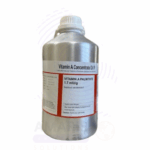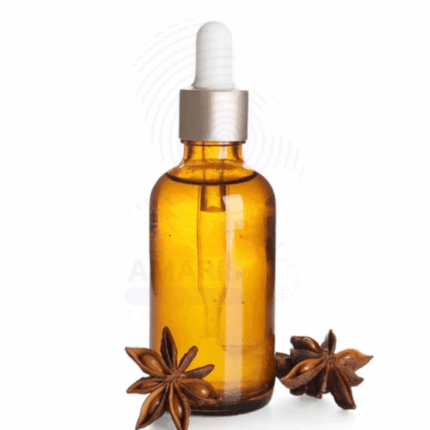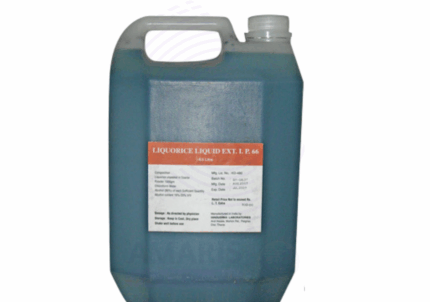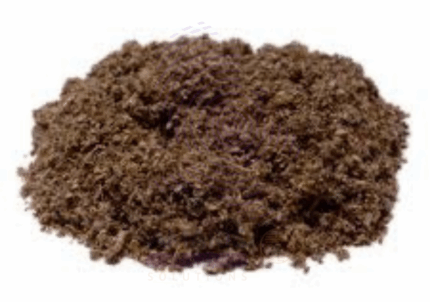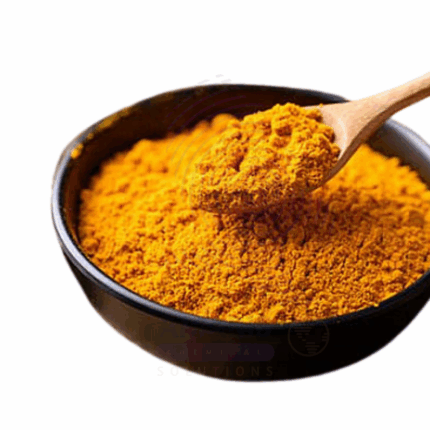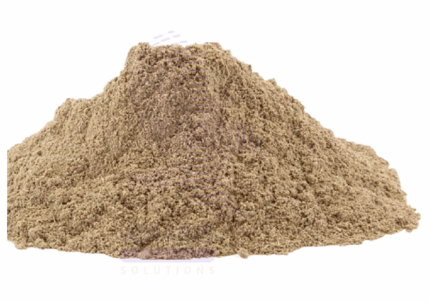Verbena (Vervain)
Whatsapp Order
Verbena (Vervain), also known as Vervain, is a medicinal and aromatic herb renowned for its therapeutic properties and fragrant aroma. It is commonly used in herbal medicine, perfumery, and flavoring applications. Verbena extracts and essential oils are valued for their calming, anti-inflammatory, and digestive benefits. The herb is harvested and processed to retain its natural active compounds for use across various industries.
Category: Dried Herbs
Tags: Botanical Ingredient, Herbal Extract, Herbal Supplements, Plant-Derived Extract, Verbena, Vervain
Description
Table of Contents
Toggle
Verbena (Vervain)
Primary Uses
- Herbal Medicine
- Calming Agent: Used to reduce anxiety, stress, and promote relaxation.
- Digestive Aid: Supports digestion and alleviates gastrointestinal discomfort.
- Anti-inflammatory: Applied in formulations for reducing inflammation and pain relief.
- Aromatherapy & Perfumery
- Essential Oil: Used as a fragrance ingredient in perfumes, soaps, and cosmetics for its fresh, lemony scent.
- Relaxation Blends: Included in aromatherapy products to promote mental calmness and balance.
- Food & Beverage
- Flavoring Agent: Used as a natural flavoring in teas, beverages, and culinary preparations.
Secondary Uses
- Cosmetics
- Skin Care: Added to topical products for soothing irritated skin and enhancing fragrance profiles.
- Traditional & Folk Remedies
- Used in baths and compresses to relieve muscle tension and skin ailments.
KEY PRODUCT FEATURES
1. Basic Identification Attributes
- Botanical Name: Verbena officinalis (common vervain)
- Common/Trade Name: Verbena, Vervain
- CAS Number: Not applicable (herbal material)
- HS Code: 1211.90.99 (herbs and plants)
- Synonyms: Common vervain, herb vervain
2. Physical & Chemical Properties
- Physical State: Dried leaves and flowering tops; essential oil liquid
- Color & Odor: Green to brown (dried herb); fresh lemony aroma (oil)
- Solubility: Essential oil soluble in alcohol and oils; herb infusable in water
3. Safety & Hazard Attributes
- GHS Classification: Generally recognized as safe in normal use
- Toxicity: Low; avoid excessive intake during pregnancy
- Exposure Limits: No specific occupational limits; handle with care to avoid allergic reactions
4. Storage & Handling Attributes
- Storage Conditions: Store dried herb in airtight containers, cool, dry place away from light
- Container Type: Bags, jars, or sealed bottles for oil
- Shelf Life: 12-24 months depending on form and storage
- Handling Precautions: Avoid dust inhalation; essential oils should be diluted before topical use
5. Regulatory & Compliance Attributes
- Complies with herbal and food safety regulations where applicable
- Suitable for use in natural health products, cosmetics, and food flavoring under relevant regulations
6. Environmental & Health Impact
- Biodegradability: Fully biodegradable as a natural plant product
- Ecotoxicity: Low environmental impact
- Bioaccumulation: Not significant
SAFETY HANDLING PRECAUTIONS
Safety Handling Precautions
- PPE Required: Gloves recommended when handling essential oil; dust mask if handling bulk dried herb
- Handling Guidelines: Use in well-ventilated areas; avoid skin contact with undiluted oil
- Storage Measures: Keep oils tightly sealed and away from heat
First Aid Measures
- Inhalation: Move to fresh air if respiratory irritation occurs
- Skin Contact: Wash with soap and water; discontinue use if irritation develops
- Eye Contact: Flush eyes with water for 15 minutes; seek medical attention if irritation persists
- Ingestion: Seek medical advice if large quantities ingested or adverse effects occur
Firefighting Measures
- Fire Hazards: Essential oil is flammable; dried herb is combustible
- Extinguishing Media: Use water spray, foam, or dry chemical extinguishers
- Hazardous Combustion Products: May produce carbon oxides and other combustion gases
Related products
Aniseed Oil
Aniseed Oil is a natural essential oil extracted through steam distillation from the dried seeds of the anise plant (Pimpinella anisum). It is rich in anethole, which imparts a sweet, licorice-like aroma and taste. This oil is widely used in flavoring, perfumery, aromatherapy, and traditional medicine. Aniseed Oil possesses antimicrobial, antifungal, and carminative properties, making it valuable in both personal care and pharmaceutical applications. It blends well with other essential oils like fennel, clove, and cinnamon, and is commonly incorporated into oral care products, cough syrups, and digestive tonics.
Its highly concentrated aromatic profile and volatility make it effective even at low usage rates. With both functional and aromatic benefits, Aniseed Oil remains a versatile and in-demand natural extract across various industries.
Liquorice
Liquorice is the dried root extract of the Glycyrrhiza glabra plant, known for its distinctive sweet flavor and medicinal properties. It contains glycyrrhizin, a compound that is 30–50 times sweeter than sugar. Liquorice is widely used as a flavoring agent in confectionery, beverages, and tobacco, as well as in traditional and modern medicine for its soothing, anti-inflammatory, and expectorant effects.
Saged Rubbed
Saged Rubbed is a natural or processed resin commonly used in industries such as adhesives, varnishes, inks, and rubber compounding. It provides tackiness, enhances adhesion properties, and contributes to film formation and durability. This product is valued for its consistent quality and performance in improving the physical properties of coatings and bonding agents.
Tumeric Powder
Tumeric Powder is a natural spice derived from the dried rhizomes of the Curcuma longa plant. Known for its bright yellow-orange color and warm, earthy flavor, turmeric is widely used as a culinary spice, natural colorant, and traditional medicine ingredient. It contains the active compound curcumin, which exhibits antioxidant, anti-inflammatory, and antimicrobial properties. Turmeric Powder is valued both as a food ingredient and for its applications in cosmetics and pharmaceutical formulations. It is finely ground to ensure uniform texture and easy incorporation into various products.
Valerian Root
Valerian Root is a natural herbal product derived from the root of the Valeriana officinalis plant, traditionally used for its calming and sedative properties. It contains active compounds such as valerenic acids and volatile oils that interact with the nervous system to promote relaxation and improve sleep quality. Widely used in both traditional medicine and modern herbal formulations, Valerian Root is valued for its ability to alleviate anxiety, reduce insomnia, and support overall mental wellness. It is available in various forms including dried root, powders, extracts, and capsules for laboratory and pharmaceutical research and formulation.
Verbena (Vervain) Extra Pure
Verbena (Vervain) Extra Pure is a finely processed, dried herbal product derived from the Verbena officinalis plant, renowned for its medicinal, aromatic, and therapeutic properties. This extra pure grade ensures high quality suitable for laboratory research, pharmaceutical formulations, and cosmetic applications. The herb is rich in bioactive compounds such as iridoids, flavonoids, and essential oils, contributing to its anti-inflammatory, antioxidant, and calming effects. Widely used in herbal remedies, topical skin-care products, and aromatherapy, Verbena also finds applications in natural flavoring and environmental research. Proper storage in airtight containers is necessary to maintain its potency and prevent degradation. Handling precautions are advised to minimize dust exposure and maintain product integrity.


 Preservatives(food)
Preservatives(food) Flavor Enhancers
Flavor Enhancers Acidulants
Acidulants Sweeteners
Sweeteners Antioxidants
Antioxidants Colorants(food)
Colorants(food) Nutraceutical Ingredients (food)
Nutraceutical Ingredients (food) Nutrient Supplements
Nutrient Supplements Emulsifiers
Emulsifiers
 Collectors
Collectors Dust Suppressants
Dust Suppressants Explosives and Blasting Agents
Explosives and Blasting Agents Flocculants and Coagulants
Flocculants and Coagulants Frothers
Frothers Leaching Agents
Leaching Agents pH Modifiers
pH Modifiers Precious Metal Extraction Agents
Precious Metal Extraction Agents
 Antioxidants(plastic)
Antioxidants(plastic) Colorants (Pigments, Dyes)
Colorants (Pigments, Dyes) Fillers and Reinforcements
Fillers and Reinforcements Flame Retardants
Flame Retardants Monomers
Monomers Plasticizers
Plasticizers Polymerization Initiators
Polymerization Initiators Stabilizers (UV, Heat)
Stabilizers (UV, Heat)
 Antifoaming Agents
Antifoaming Agents Chelating Agents
Chelating Agents Coagulants and Flocculants
Coagulants and Flocculants Corrosion Inhibitors
Corrosion Inhibitors Disinfectants and Biocides
Disinfectants and Biocides Oxidizing Agents
Oxidizing Agents pH Adjusters
pH Adjusters Scale Inhibitors( water)
Scale Inhibitors( water)
 Antioxidants(cosmetic)
Antioxidants(cosmetic) Emollients
Emollients Fragrances and Essential Oils
Fragrances and Essential Oils Humectants
Humectants Preservatives
Preservatives Surfactants(cosmetic)
Surfactants(cosmetic) Thickeners
Thickeners UV Filters
UV Filters
 Fertilizers
Fertilizers Soil Conditioners
Soil Conditioners Plant Growth Regulators
Plant Growth Regulators Animal Feed Additives
Animal Feed Additives Biostimulants
Biostimulants Pesticides (Herbicides, Insecticides, Fungicides)
Pesticides (Herbicides, Insecticides, Fungicides)
 Active Pharmaceutical Ingredients (APIs)
Active Pharmaceutical Ingredients (APIs) Excipients
Excipients Solvents(pharmaceutical)
Solvents(pharmaceutical) Antibiotics
Antibiotics Antiseptics and Disinfectants
Antiseptics and Disinfectants Vaccine Adjuvants
Vaccine Adjuvants Nutraceutical Ingredients (pharmaceutical)
Nutraceutical Ingredients (pharmaceutical) Analgesics & Antipyretics
Analgesics & Antipyretics
 Analytical Reagents
Analytical Reagents Solvents(lab)
Solvents(lab) Chromatography Chemicals
Chromatography Chemicals Spectroscopy Reagents
Spectroscopy Reagents microbiology-and-cell-culture-reagents
microbiology-and-cell-culture-reagents Molecular Biology Reagents
Molecular Biology Reagents Biochemical Reagents
Biochemical Reagents Inorganic and Organic Standards
Inorganic and Organic Standards Laboratory Safety Chemicals
Laboratory Safety Chemicals Specialty Laboratory Chemicals(Special Laboratory Equipment)
Specialty Laboratory Chemicals(Special Laboratory Equipment)
 Demulsifiers
Demulsifiers Hydraulic Fracturing Fluids
Hydraulic Fracturing Fluids Scale Inhibitors(oil)
Scale Inhibitors(oil) Surfactants(oil)
Surfactants(oil) Drilling Fluids
Drilling Fluids
 Dyes and Pigments
Dyes and Pigments Bleaching Agents
Bleaching Agents Softening Agents
Softening Agents Finishing Agents
Finishing Agents Antistatic Agents
Antistatic Agents
 Admixtures
Admixtures Waterproofing Agents
Waterproofing Agents Sealants and Adhesives
Sealants and Adhesives Curing Compounds
Curing Compounds Concrete Repair Chemicals
Concrete Repair Chemicals Anti-Corrosion Coatings
Anti-Corrosion Coatings
 Surfactants(cleaning)
Surfactants(cleaning) Builders
Builders Enzymes
Enzymes Solvents (Cleaning)
Solvents (Cleaning) Fragrances
Fragrances
 Electronic Chemicals
Electronic Chemicals Catalysts
Catalysts Lubricants
Lubricants Photographic Chemicals
Photographic Chemicals Refrigerants
Refrigerants Automotive chemicals
Automotive chemicals Pyrotechnic Chemicals
Pyrotechnic Chemicals
 Biodegradable Surfactants
Biodegradable Surfactants Bio-based Solvents
Bio-based Solvents Renewable Polymers
Renewable Polymers Carbon Capture Chemicals
Carbon Capture Chemicals Wastewater Treatment Chemicals
Wastewater Treatment Chemicals
 Pigments
Pigments Solvents(paint)
Solvents(paint) Specialty Coatings
Specialty Coatings Binders/Resins
Binders/Resins Additives
Additives Driers
Driers Anti-Corrosion Agents
Anti-Corrosion Agents Functional Coatings
Functional Coatings Application-Specific Coatings
Application-Specific Coatings
 Fresh Herbs
Fresh Herbs Ground Spices
Ground Spices Whole Spices
Whole Spices Spice Blends
Spice Blends Dried Herbs
Dried Herbs
 Leavening Agents
Leavening Agents Dough Conditioners
Dough Conditioners Flour Treatments
Flour Treatments Fat Replacers
Fat Replacers Decoratives
Decoratives Preservatives(baking)
Preservatives(baking)
 Plasticizers & Softeners
Plasticizers & Softeners Reinforcing Agents
Reinforcing Agents Adhesion Promoters
Adhesion Promoters Vulcanizing Agents
Vulcanizing Agents Antidegradants
Antidegradants Blowing Agents
Blowing Agents Fillers & Extenders
Fillers & Extenders Accelerators & Retarders
Accelerators & Retarders

